My Korean neighbor Mrs. Park knocked on my door last July with a bowl of something that looked like fire and tasted like heaven. This fresh kimchi was nothing like the fermented stuff I'd tried before - it was crisp, spicy, and ready to eat right away. She taught me her family recipe that afternoon, and now Max asks for "Mrs. Park's crunchy salad" at least three times a week. No waiting, no fermenting, just pure Korean flavor that hits your taste buds immediately.
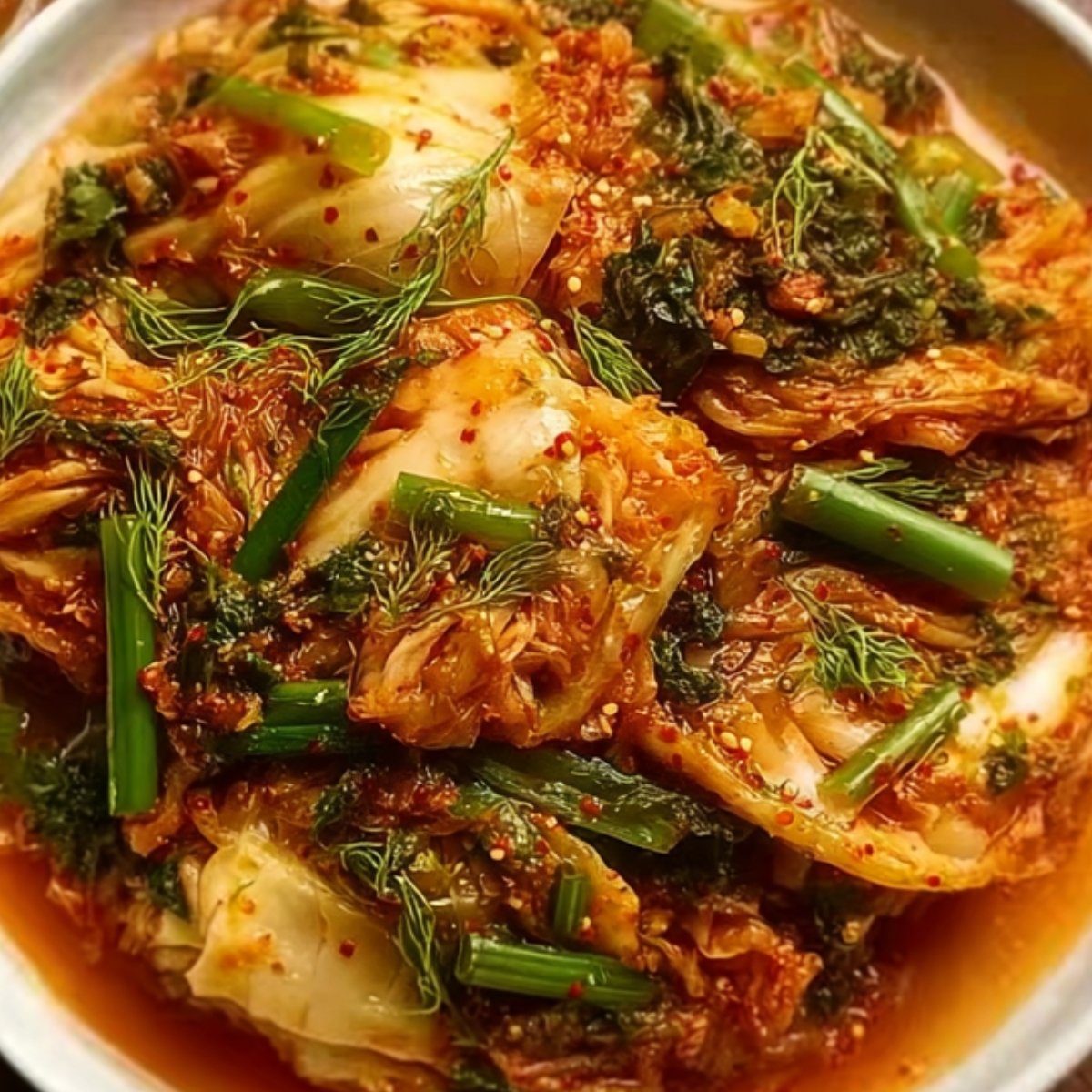
Why You'll Love This Fresh Kimchi Recipe
After making this for months, here's what I've learned about why families keep coming back to it. Mrs. Park showed me this when I was complaining about wanting kimchi but not having any ready. Regular kimchi sits for weeks getting sour, but this version tastes great the moment you finish mixing it. My seven-year-old was scared of anything spicy, but he tried this because Mrs. Park made it seem like an adventure. Now he asks for "the red crunchy stuff" and even adds it to his rice without me asking.
The cabbage doesn't get mushy like the fermented kind. Every bite still has that satisfying crunch that makes you want to keep eating more. We've put this on grilled chicken, mixed it into fried rice, and Max even tried it on a turkey sandwich. It makes boring weeknight meals taste more interesting. The only thing I had to hunt for was gochugaru at the Korean market, but now I see it at regular grocery stores too. Everything else was already in my kitchen.
Jump to:
- Why You'll Love This Fresh Kimchi Recipe
- Ingredients for Fresh Kimchi
- How To Make Fresh Kimchi Step By Step
- Smart Swaps for Fresh Kimchi
- Tasty Twists on Fresh Kimchi
- Equipment For Fresh Kimchi
- Storing Your Fresh Kimchi
- How My Sister's Dish Became a Family Favorite
- TOP TIP:
- Why This Recipe Works
- FAQ
- Time to Get Spicy!
- Related
- Pairing
- fresh kimchi
Ingredients for Fresh Kimchi
The Vegetables:
- Napa cabbage
- Green onions
- Korean radish or daikon
- Garlic cloves
- Fresh ginger
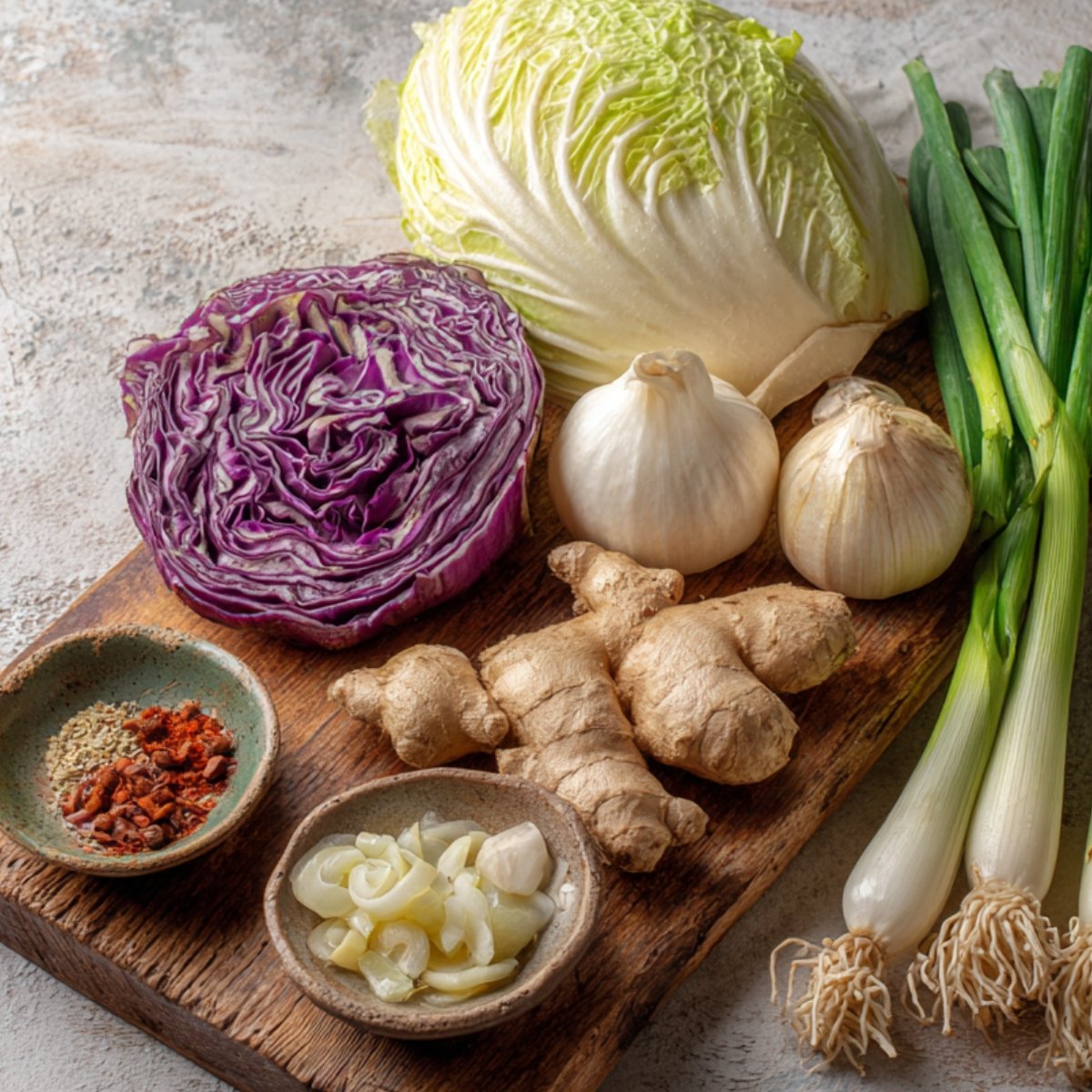
The Spice Mix:
- Gochugaru
- Fish sauce
- Rice vinegar
- Sugar
- Salt
Simple Tools:
- Large mixing bowl
- Rubber gloves
- Sharp knife
See recipe card for quantities.
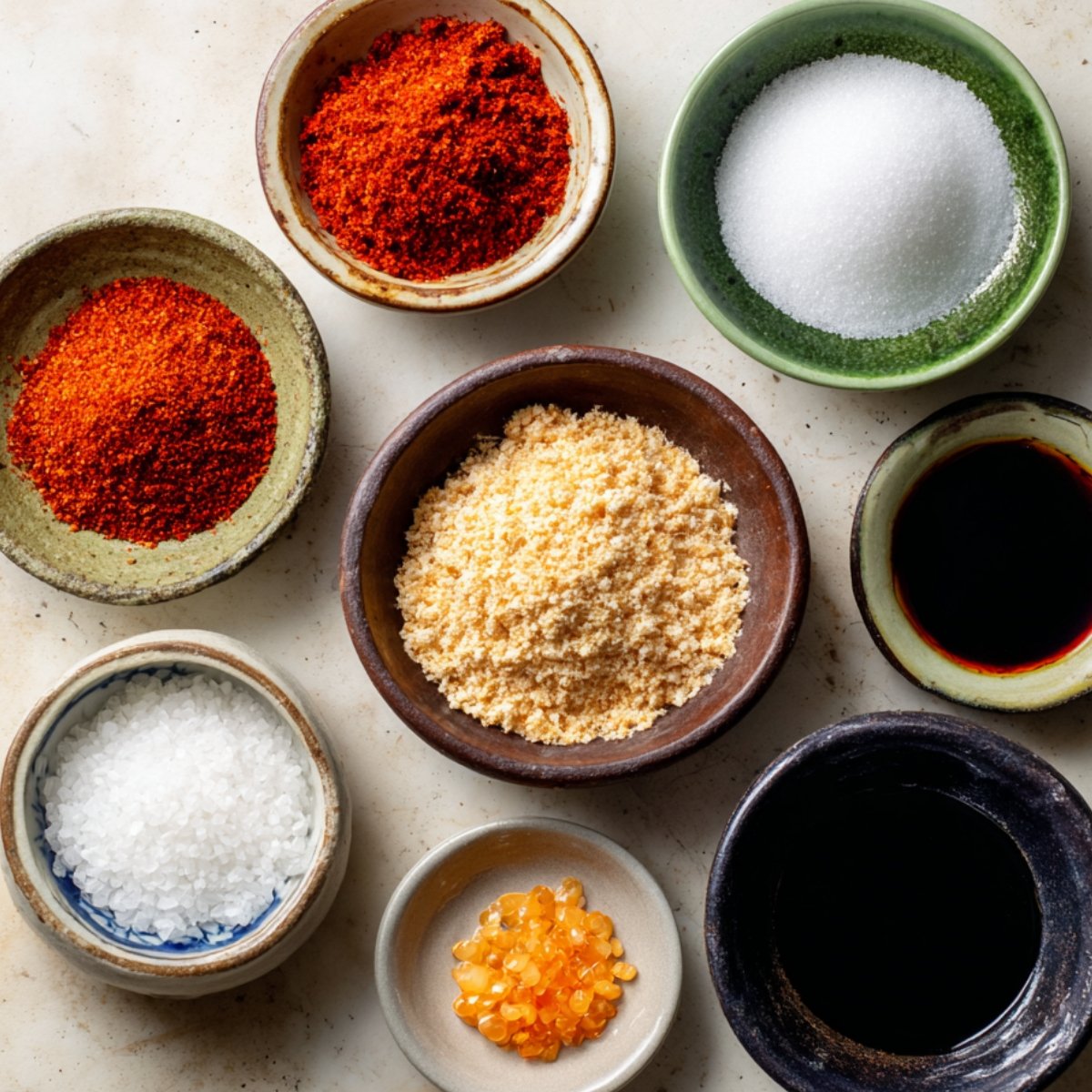
How To Make Fresh Kimchi Step By Step
Salt and Drain:
- Chop cabbage into bite-sized pieces
- Toss with coarse salt generously
- Let sit 30 minutes to draw out water
- Rinse thoroughly and drain well
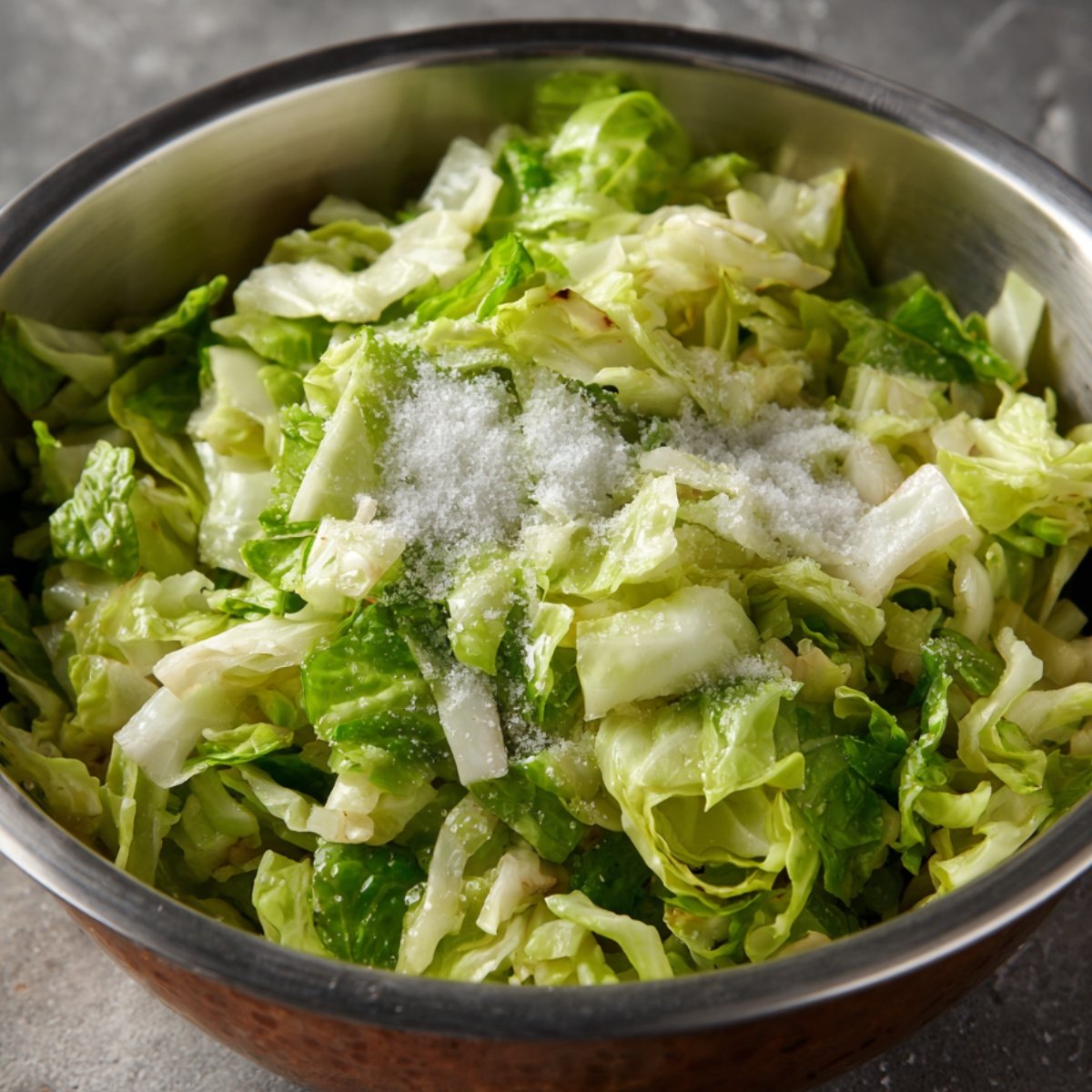
Create the Paste:
- Mince garlic and ginger finely
- Mix with gochugaru and fish sauce
- Add rice vinegar and sugar
- Stir until sugar dissolves
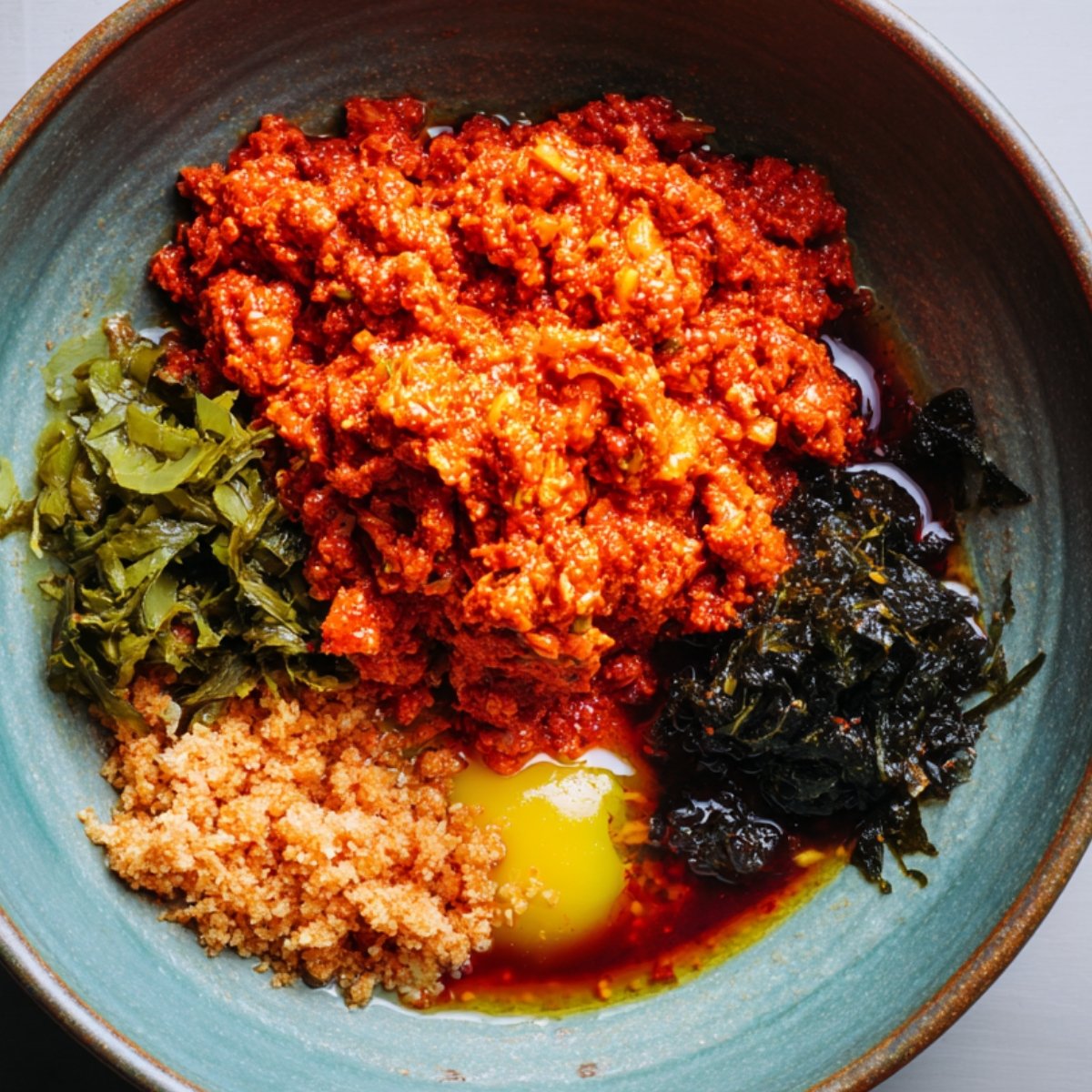
Mix and Season:
- Combine drained cabbage with paste
- Add sliced green onions and radish
- Toss everything with clean hands
- Taste and adjust seasonings
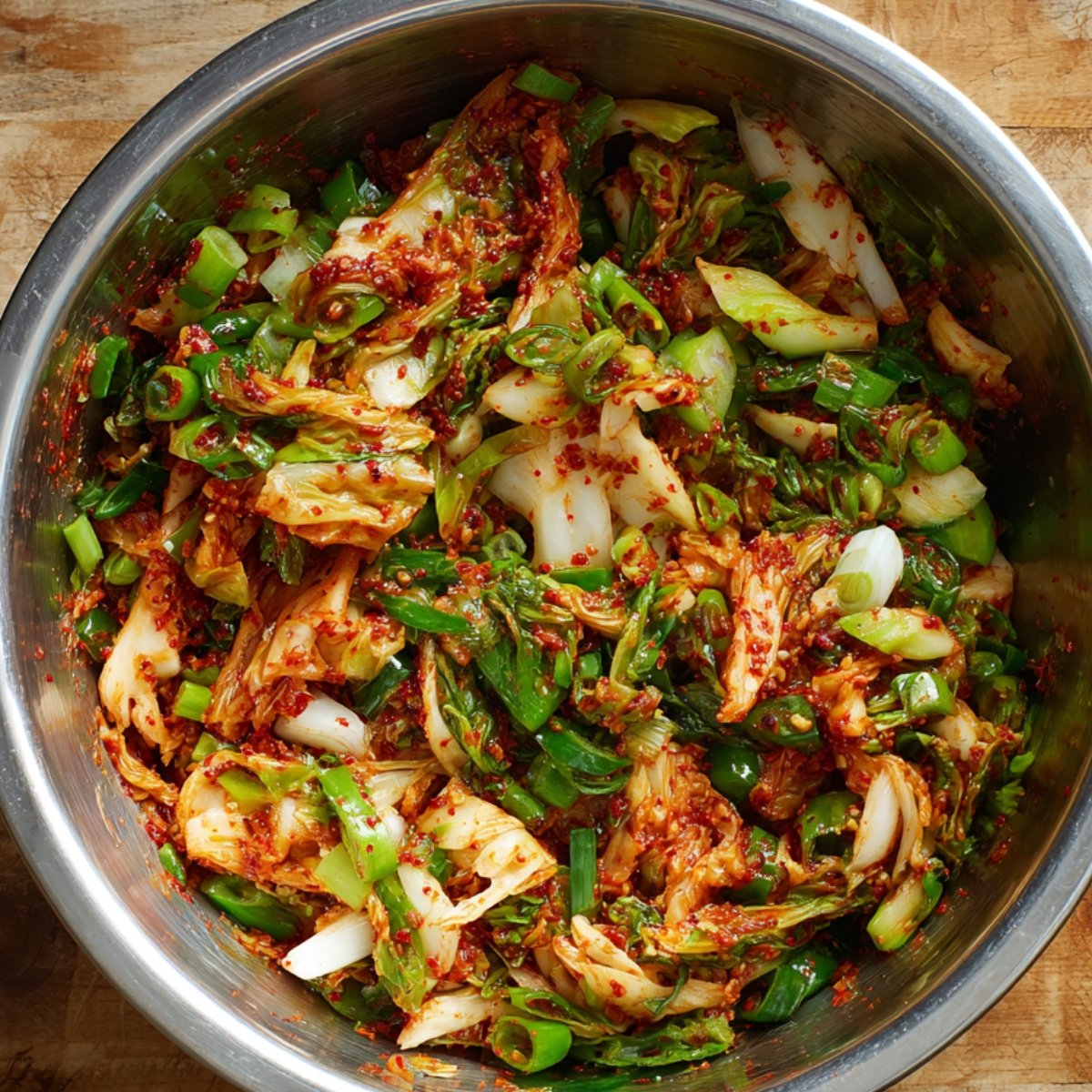
Final Touch:
- Drizzle with sesame oil
- Sprinkle toasted sesame seeds
- Let rest 15 minutes before serving
- Serve immediately or chill briefly
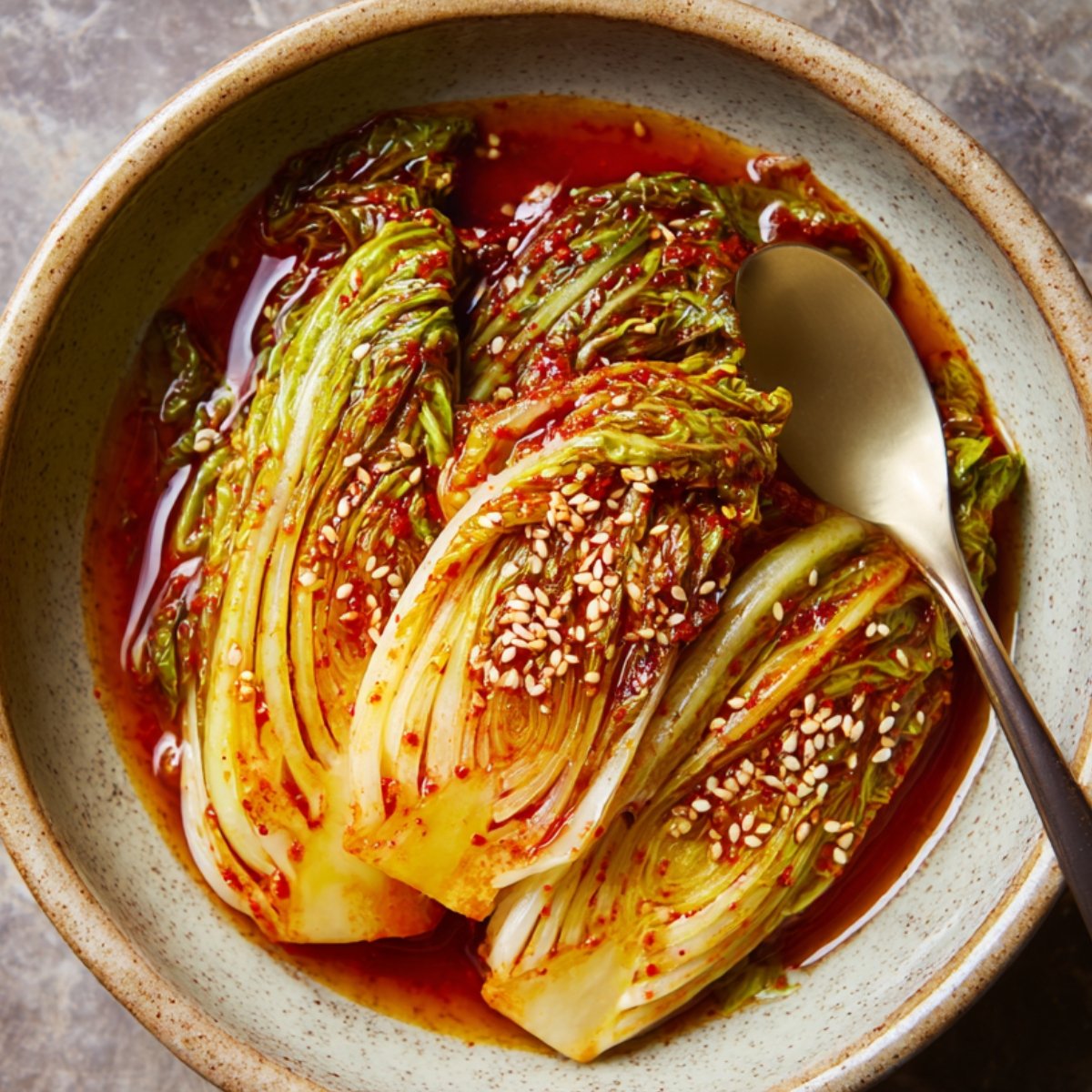
Smart Swaps for Fresh Kimchi
Vegetarian Version:
- Fish sauce → Soy sauce
- Anchovy paste → Mushroom paste
- Traditional → Vegan gochugaru
Milder Heat:
- Full gochugaru → Half paprika, half gochugaru
- Spicy → Sweet red pepper flakes
- Traditional → Mild Korean chili powder
Texture Variations:
- All cabbage → Add cucumber kimchi
- Standard → Include radish kimchi pieces
- Basic → Mixed vegetable version
Tasty Twists on Fresh Kimchi
Summer Fresh:
- Add thinly sliced cucumber
- Extra rice vinegar for tang
- Fresh mint leaves
- Lighter on oil
Fruit Enhanced:
- Grated Asian pear
- Touch of honey
- Extra sesame seeds
- Crisp apple pieces
Protein Boost:
- Toasted pine nuts
- Sesame seed mix
- Crushed peanuts
- Sunflower seeds
Restaurant Style:
- Professional knife cuts
- Extra garlic and ginger
- Double sesame oil
- Perfect seasoning balance
Equipment For Fresh Kimchi
- Large mixing bowl
- Rubber or vinyl gloves
- Sharp chef's knife
- Fine-mesh colander
- Measuring spoons
Storing Your Fresh Kimchi
Immediate Serving (same day):
- Room temperature for up to 2 hours
- Crisp texture at its best
- Bright, clean flavors
- Perfect for Korean BBQ
Refrigerator Storage (3-4 days):
- Airtight glass container
- Keeps crisp texture
- Flavors meld beautifully
- Still maintains "fresh" character
Not Recommended:
- Freezing changes texture completely
- Room temperature beyond 2 hours
- Metal containers (can react with acidity)
How My Sister's Dish Became a Family Favorite
My sister discovered fresh kimchi during her college semester abroad program. When she came home that summer, she was determined to recreate the crispy, spicy dish she'd fallen in love with at a small family restaurant. Her first few attempts were disasters - too salty, not spicy enough, or completely soggy from over-salting the cabbage. But she kept experimenting, adjusting the gochugaru amounts and perfecting her salting technique.
The breakthrough came when she started making it for our weekly family dinners. Everyone loved how this fresh kimchi recipe delivered all the bold Korean flavors without the wait time of traditional fermented versions. Even our grandmother, who was skeptical of "foreign foods," found herself asking for seconds. Now it's become our go-to side dish for barbecues and potluck gatherings. My sister's persistence taught me that the best family recipes often come from someone's passion project that gradually wins over the whole household.
TOP TIP:
- Max made our best fresh kimchi discovery completely by accident last summer. While I was busy teaching him proper knife skills, he wandered over to our herb garden and grabbed a handful of fresh mint leaves. Before I could stop him, he'd tossed them right into our kimchi bowl. My first instinct was to start over, but Max insisted we try it first. That bright, cooling mint paired with the spicy gochugaru created something magical - a fresh kimchi that tasted like summer in Korea.
- The lesson? Sometimes the best cooking discoveries come from curious seven-year-olds who haven't learned the "rules" yet. Max's accidental addition taught me that fresh kimchi welcomes creative touches in ways that traditional fermented versions might not. Now we deliberately add a few torn mint leaves to our weekend batches, especially when serving it alongside grilled foods. His enthusiasm for experimenting reminds me why cooking should always have room for happy accidents and why the kitchen is the perfect place for family
Why This Recipe Works
This fresh kimchi recipe succeeds because it respects the fundamental principles of Korean cooking while making them accessible to home cooks. The salting process draws out excess moisture from the cabbage, creating the perfect crispy texture that defines geotjeori. Unlike fermented kimchi that relies on time to develop complexity, this version achieves bold flavors immediately through the careful balance of gochugaru, fish sauce, and rice vinegar.
The technique eliminates common kimchi-making pitfalls that frustrate beginners. By controlling the salt timing and using fresh ingredients at their peak, you get consistent results every time. The immediate serving aspect means no guesswork about fermentation levels or storage conditions. This fresh kimchi recipe also allows for easy customization - you can adjust heat levels, add vegetables, or modify seasonings without worrying about how changes might affect a weeks-long fermentation process.
FAQ
What is the difference between fresh kimchi and kimchi?
Fresh kimchi (geotjeori) is eaten immediately after preparation and has a crisp, clean taste, while traditional kimchi ferments for days or weeks, developing complex sour flavors and softer texture. Fresh kimchi maintains the vegetables' original crunch and bright seasoning without the tangy fermentation notes.
Is there such a thing as fresh kimchi?
Yes, fresh kimchi is a legitimate Korean dish called geotjeori. It's commonly served in Korean restaurants and homes as an immediate-eating version that doesn't require fermentation time. This fresh kimchi recipe represents an authentic preparation method that's been used for generations.
What is freshly made kimchi called?
Freshly made kimchi that's eaten right away is called "geotjeori" in Korean. The term translates roughly to "fresh salad" and specifically refers to seasoned vegetables that are consumed immediately rather than aged. It's considered a distinct dish from traditional fermented kimchi.
Can you eat fresh kimchi?
Absolutely! Fresh kimchi is safe and delicious to eat immediately after preparation. Unlike fermented versions that develop beneficial probiotics over time, fresh kimchi provides instant gratification with its crisp texture and bright flavors. Many people actually prefer the clean taste of fresh kimchi over fermented versions.
Time to Get Spicy!
Now you have all the secrets to making perfect fresh kimchi from proper salting technique to Max's mint discovery. This crispy, spicy side dish proves that Korean flavors don't always require patience and fermentation time.
Craving more Korean-inspired dishes? Try our The Best Sweet Potato Hash Recipe
that pairs perfectly with this fresh kimchi. For more fermented flavors, master our Delicious Orange Cake Recipe, or explore our Easy Peach Lemonade Recipe that shares similar bright, crunchy appeal!
Share your fresh kimchi success! We love seeing your colorful creations!
Rate this recipe and join our cooking community!
Related
Looking for other recipes like this? Try these:
Pairing
These are my favorite dishes to serve with Fresh Kimchi

fresh kimchi
Ingredients
Equipment
Method
- Chop napa cabbage and toss with coarse salt to draw out moisture.
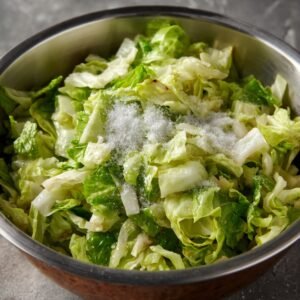
- Let the cabbage sit for 30 minutes to allow moisture to release.
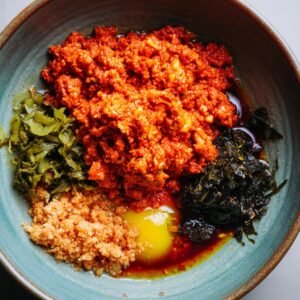
- Mince garlic and ginger, then mix with gochugaru, fish sauce, and vinegar.
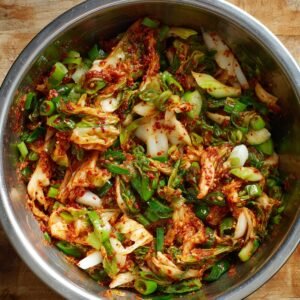
- Combine cabbage with the paste, and add sliced green onions and radish.
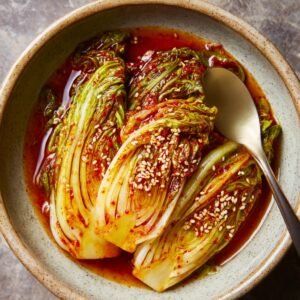
- Taste the mixture and adjust the seasoning to your preference.














Leave a Reply